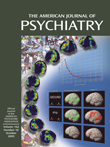For the past half-century, the dopamine hypothesis has dominated thinking about the neuropharmacological underpinnings of schizophrenia and antipsychotic action. Despite the absence of any definitive evidence of specific dopaminergic abnormalities in schizophrenia and only indirect support for a specific role of dopamine antagonism in its treatment, discussions about the pathophysiology and treatment of schizophrenia continue to focus on dopamine. There is, in fact, no single dopamine hypothesis of schizophrenia and antipsychotic action. Ideas about the pathophysiology of schizophrenia have evolved from too much dopamine somewhere in the brain (1960s–1970s) to increased activity at the D2 dopamine receptor (1970s–1980s) to the current concepts of too much dopamine somewhere (the “emotional” mesolimbic circuit) and too little dopamine elsewhere (the “thinking” mesocortical circuit), or too much dopamine sometime (stimulated “phasic” increase) and too little dopamine most of the time (tonic deficiency). In the context of an abundance of often confusing findings from numerous areas of research, what is the current state of our understanding of the role of dopamine in the pathophysiology and treatment of schizophrenia?
This superbly edited pocketbook clearly describes the current status of dopamine research in schizophrenia and antipsychotic action. The relationship of cognitive dysfunction in schizophrenia to dopamine susceptibility genes and prefrontal dopamine signaling is described in the light of recent findings, and information about the role of genetic variation in predicting individual antipsychotic treatment response is considered. The role of dopamine in different brain circuits is summarized in the context of interactions with other neurotransmitters (particularly glutamate and serotonin) and the functions that these circuits subserve. The specific role of dopaminergic neurotransmission in normal information processing, reward-reinforcement, and attribution of salience is described. How observed dopaminergic abnormalities in schizophrenia can explain its complex psychopathology is then considered: pathologically increased stimulated phasic dopamine activity can explain the positive symptoms of schizophrenia (paranoia, delusions, and hallucinations), and decreased tonic dopamine activity can explain negative and cognitive symptoms of the illness along with the greater occurrence of substance abuse. The first half of this handbook succinctly connects current research about the role of dopaminergic abnormalities in the etiology and pathophysiology of schizophrenia to the psychopathology of the illness in a logical and coherent manner.
The second half of the book elucidates current thinking about how specific antidopaminergic actions of medications are relevant to their antipsychotic effects and what pharmacological attributes might explain differences between typical and atypical antipsychotics with regard to their spectrum of efficacy in the treatment of schizophrenia and their propensity to cause neurological and endocrine adverse effects. There is a detailed consideration of amisulpride, which is described as a “distinctive atypical antipsychotic agent because of its uniquely high selectivity for dopamine receptors.” This chapter should be of particular interest to American readers who are unfamiliar with amisulpride because of its lack of availability. The final chapter considers current challenges in the treatment of schizophrenia and possible future strategies to meet these challenges.
I highly recommend this 100-page pocketbook to anyone with an interest in understanding the current state of dopamine research in schizophrenia and antipsychotic action without wading through volumes. Adapted and abridged from the proceedings of a recent symposium in which many international experts in dopamine research in schizophrenia participated, this concise handbook contains simple yet nonbanal explanations of complex topics and combines brevity with relatively comprehensive coverage of an important topic in an easy-to-read format.
Of course, there are some bones that one can pick with the editors of this book. There are findings in the literature not consistent with the ideas enunciated in this pocketbook that are inadequately considered. There are discrepancies about the role of dopamine in the pathophysiology of schizophrenia and the mechanism of antipsychotic action that call for an explanation. There are questions that linger. But to fault this succinct handbook for this lack of completeness would be nitpicking. The absence of any disclosure of potential conflicts of interest by the editors of the pocketbook and other participants in the symposium from whose proceedings the pocketbook was abstracted is, however, a notable omission. Furthermore, the question of whether the production of this pocketbook or the conduct of the symposium was supported by a commercial entity that may have potentially influenced their content is not answered. Notwithstanding this omission, this pocketbook is informative, current, and a pleasure to read.

